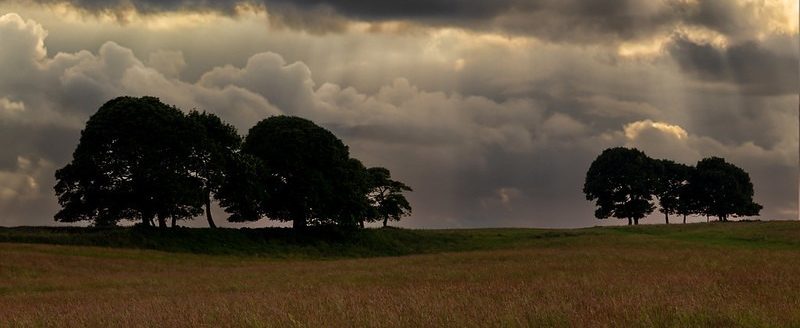The art of a storm: beauty, brutality, and bedlam
Few sights are as awe-inspiring and fear-inducing as a storm. Generations have written, drawn, and created in an attempt to recreate the sublime feeling of this natural turbulence. Storm Eowyn, as it recently hit Britain and Ireland, was an inspiring force for many to return to past depictions of stormy weather. In their multitudes of subjects, of religious, historic, or imagined capabilities, one can notice the recurring theme of power and instability. This article observes three different depictions of storms from the 19th century and the way they present beauty, brutality, and bedlam.
Seascape Study with Rain Cloud by John Constable (1827)
John Constable, an English landscape painter, was known for revolutionising the genre of landscape painting. In his 1827 painting, Seascape Study with Rain Cloud, Constable depicts a seascape with a looming raincloud incoming. The scene is dark, the waves are choppy, and the brush strokes are rough. In this painting, Constable effectively depicts the ever-changing nature of a storm, displacing onto the work immediacy in sight. The targets are moving in time, the viewer witnesses the scene as Constable did. The coastal scene is dramatic, and the feeling is unsettling. There is a supernatural dynamism to the storm depicted, transposing human panic and fear into the paint strokes.
Retreat from the Storm by Jean-François Millet (1846)
Jean-François Millet, a French Realism artist, was an avid painter of ‘pure landscapes’. He notably depicted the experience and livelihoods of peasant farmers, which is evident in his painting Retreat from the Storm. This mother and child, carrying sticks of firewood for their warmth and survival, fight through weather conditions that imply an incoming storm. Through rough paint strokes, dark tones, and hunched figures, an effective sense of weariness and struggle is conveyed. The pair appear in a fight against the weather. As the storm is persisting and biting, the mother pulls her child forward. This painting, as it evokes an understanding of the vulnerability and fear of humanity, also portrays the unity of family. The mother looks and leans forward in a position of determination. Perhaps this painting serves as a reminder of the insistent strength of human will and family.
The Slave Ship by
Joseph Mallord William Turner (1840)
Joseph Mallord William Turner, an English Romantic painter, often used colouring as an expressive tool. In his painting, The Slave Ship, on the background of a vivid sunset, depicts chained, enslaved people being thrown overboard during a typhoon. The painting serves as a campaign to join the abolition movement. As the sunset is warm and thrilling, it mirrors the fires of hell. As the ship is engulfed by the sun, Turner emphasises the relationship between Nature and divine retribution. As the enslavers threw the enslaved from the boat, they were not allowed respite from the storm. It is unforgiving, it will not allow mercy to those who commit crimes against humanity. Human nature is portrayed as a terrifying force, and physical nature contradictorily, as retributive.
From the anxious storms of John Constable’s Seascape Study with Rain Cloud, to the determination of humanity in Jean-François Millet’s Retreat from the Storm, and the retribution against inhumane cruelty in Joseph Mallord William Turner’s The Slave Ship, storms are crucially presented as sources of power and chaos. Paintings enlist storms as sources of political critique, emotional resilience, or capturing the sublime. Storms are a timeless muse, ever inspiring as a creative force. In poetry, painting, and even plays, they act as a tempest of humanity. Artists who dare to capture a storm capture the psyche of the individual underneath.

Comments